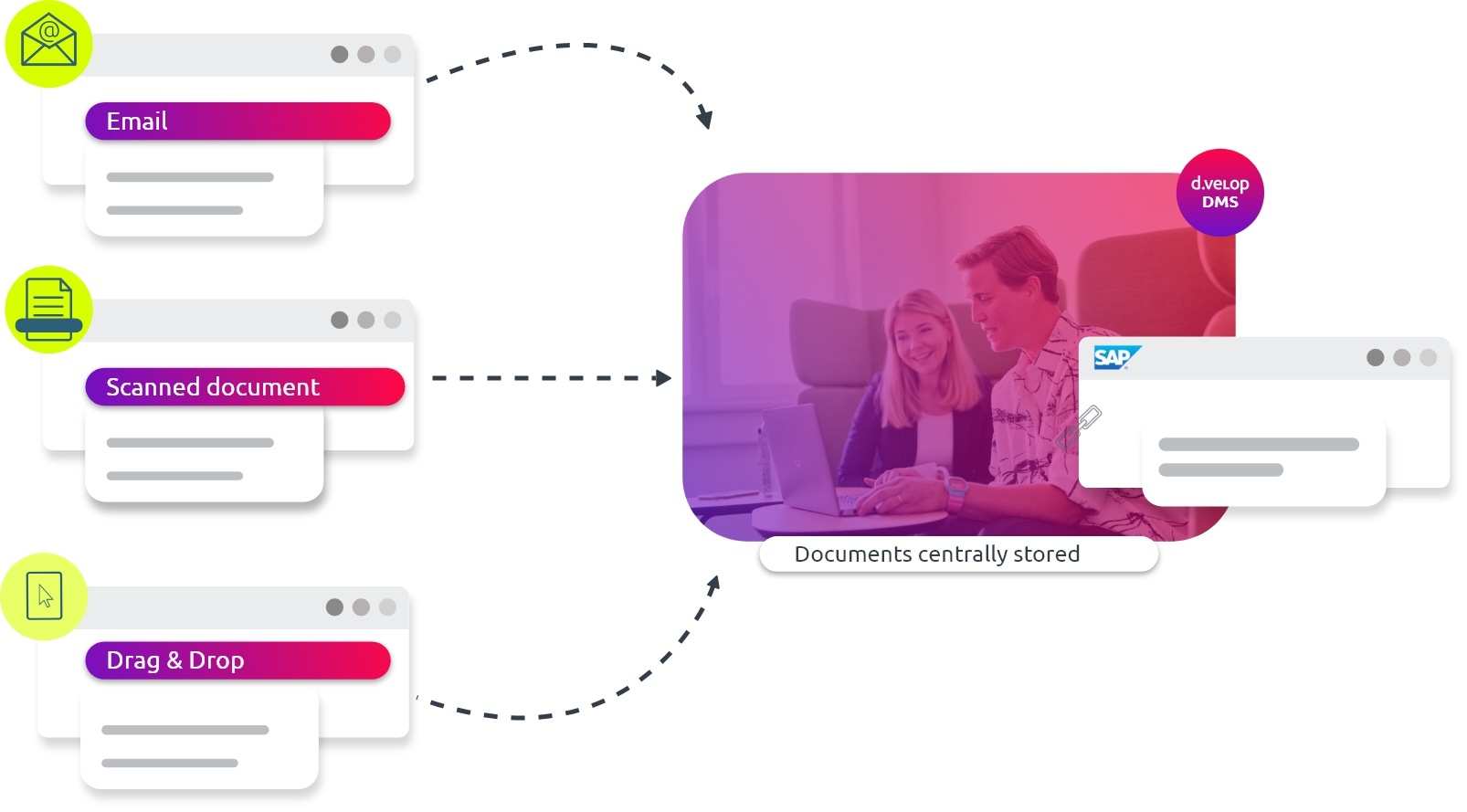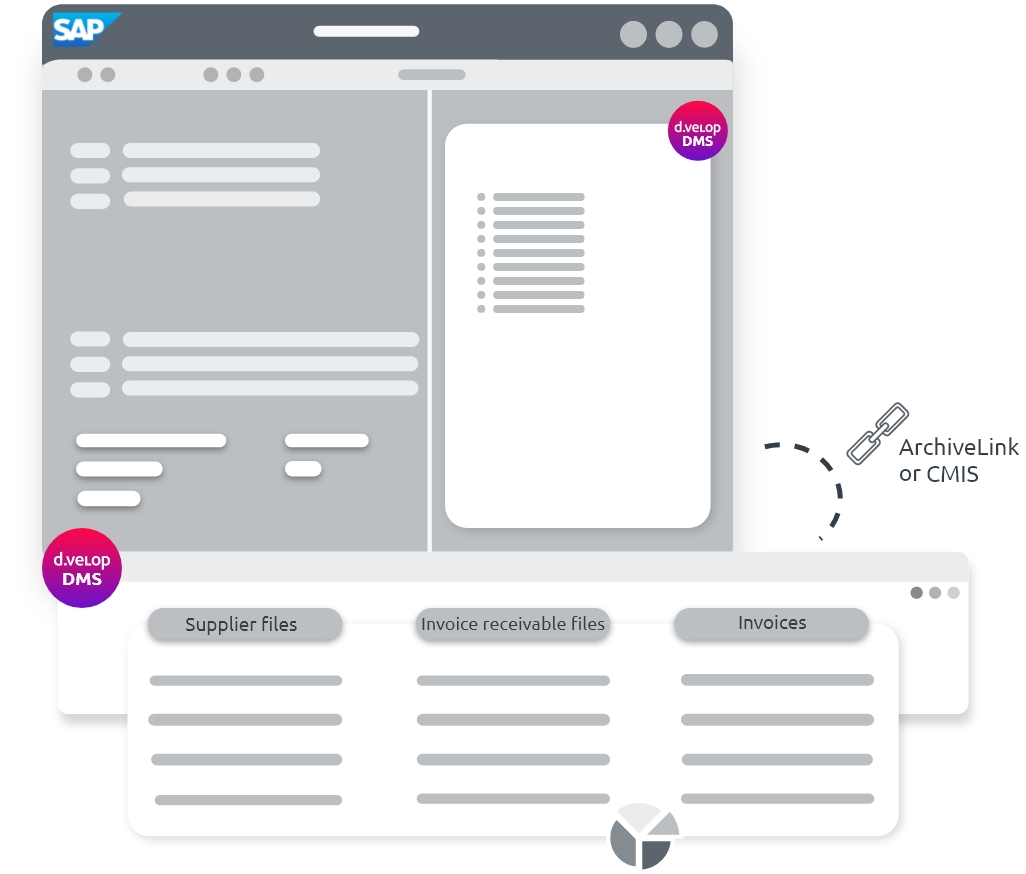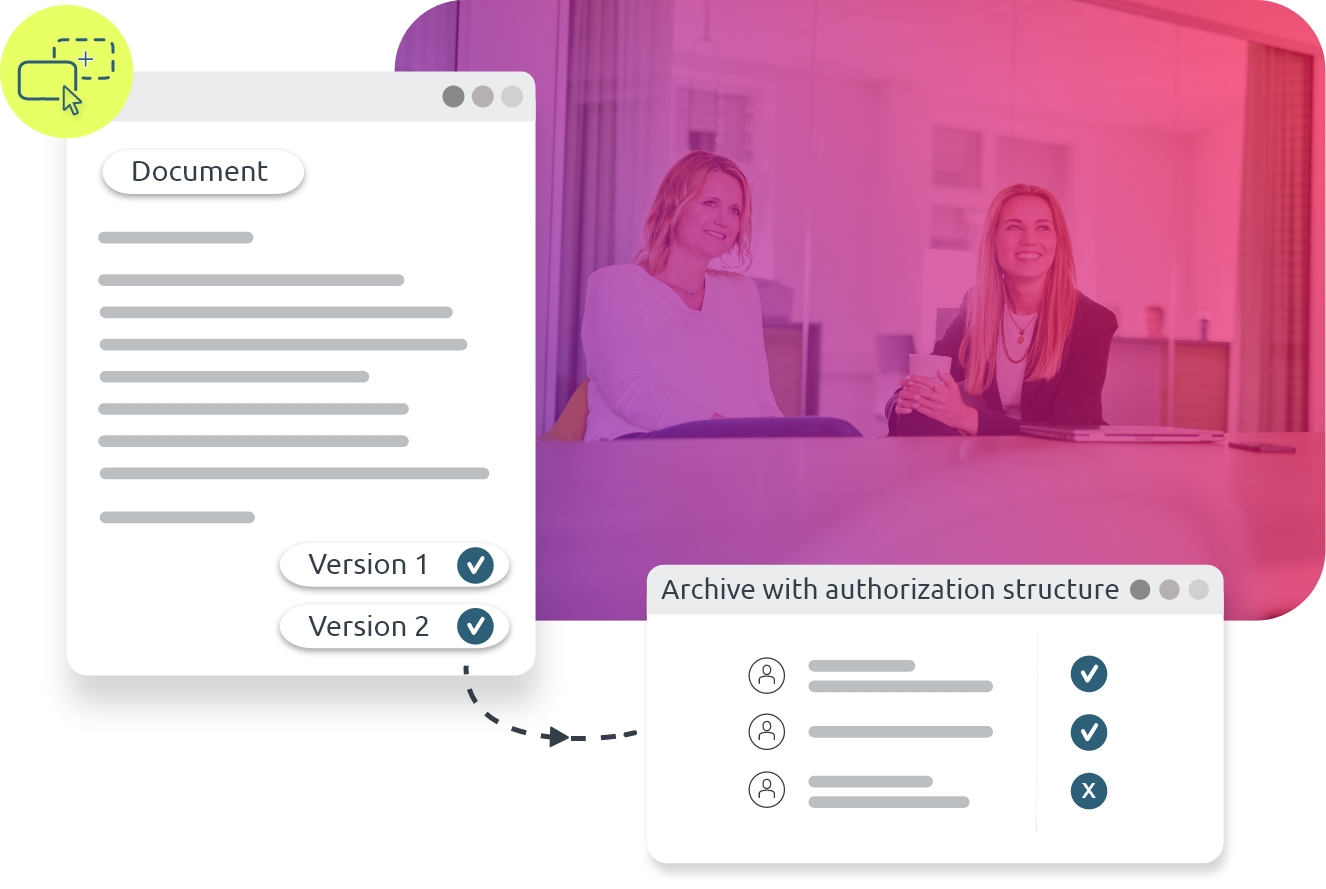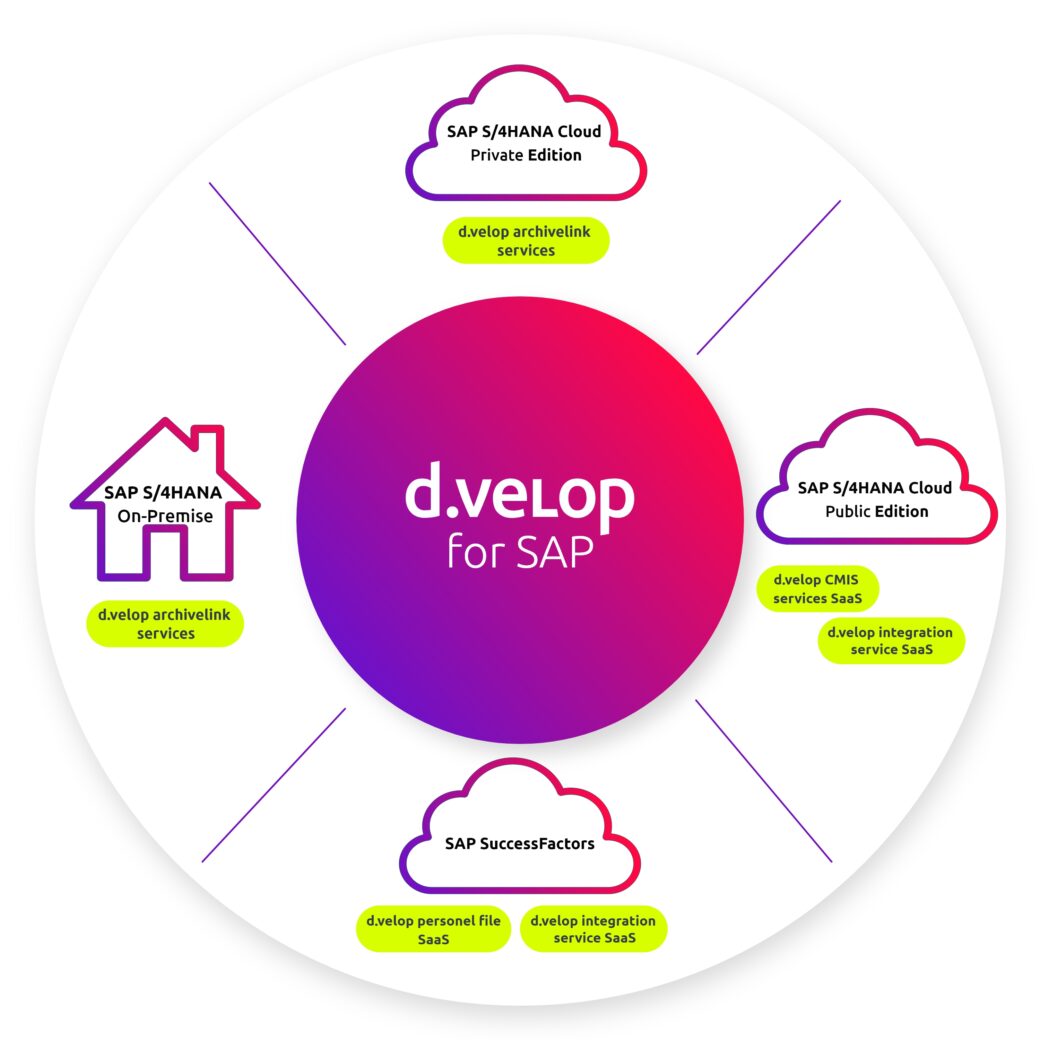SAP S/4HANA Cloud Overview
With S/4HANA Cloud, SAP offers for the first time the possibility to operate an ERP system in the cloud. SAP provides its customers with two versions (SAP S/4HANA Cloud, public and private edition) that differ significantly in their scope of functionality.
SAP S/4HANA Cloud is based on the code of the on-premises variant and runs on the in-memory database SAP HANA. The cloud version has a similar functional scope to SAP S/4HANA on-premises but offers many advantages.
SAP S/4HANA Cloud | Private Edition
The SAP S/4HANA Private Cloud offers full ERP functionality with partner add-ons and allows comprehensive customisation and extension of the standard, including access to customisation and the ability to modify the source code. This variant supports both Greenfield (new implementation) and Brownfield approaches (system conversion of the existing ERP system). Companies can plan and execute upgrades independently, but must perform an upgrade at least every five years to remain in mainstream maintenance.
With SAP S/4HANA Private Cloud, SAP handles all functions except for implementation and application management, which must be outsourced to an SAP partner.
SAP S/4HANA Cloud | Public Edition
The SAP S/4HANA Public Cloud is a public cloud variant of the system. It is based on a public cloud infrastructure shared by customers. In comparison to the Private Cloud variant, the functionality is reduced, yet all core functions are available, covering essential industries. Users have limited options for extensions and customisations, as significant changes in the core system are not possible (Clean Core Strategy). The Public Cloud variant exclusively supports the Greenfield approach; a conversion of the existing system (Brownfield approach) is not allowed. Upgrades are mandatory quarterly, and the timing cannot be chosen by the company in the public cloud.
For customer-specific extensions, SAP provides opportunities to develop extensions on the SAP Business Technology Platform or other external services using public APIs, which are freely accessible on the SAP Business API Hub (https://api.sap.com/).
SAP S/4HANA | Any-/On-Premise
SAP S/4HANA On-Premise runs on the company’s own servers and is also managed by the company itself in terms of infrastructure and maintenance. Like the Private and Public Cloud variants, this option is based on the HANA database. Due to the independent management of the system, the company has more flexibility for individual customisations, as the cloud variants come with pre-configured environments. The frequency of upgrades is determined by the company, but they must be carried out independently.
In terms of costs, the On-Premises variant may initially appear more expensive due to the self-management of the system compared to the cloud variants. However, one-time license costs of the On-Premises variant need to be weighed against the annual recurring license costs of the cloud variants. Therefore, the choice between them depends on the specific needs and preferences of each company.
The SAP S/4HANA Cloud Solutions in Comparison
| Criterion | SAP S/4HANA Cloud | Public Edition | SAP S/4HANA Cloud | Private Edition |
| Hosting | Hosting in a public network (Multi-Tenant) | Hosting in a private network (Single Tenant), protected by a firewall |
| Operating model, technical foundation | Pure SaaS solution, hosting, and operation in SAP data centers (SAP Public Cloud) | Flexible hosting and operating models, IaaS provider can be freely chosen |
| Flexibility | Standardised, based on templates and best practices (source code cannot be modified) | Highly customisable and flexible |
| Upgrades | Update obligation: Automatic upgrades are mandatory (two major releases per year) | Self-determined pace of innovation: one upgrade per year, which is not mandatory to install |
| Costs | Low acquisition and total operating costs | Higher acquisition and overall operating costs |
| Migration | Only Greenfield approach (new implementation) | Greenfield and Brownfield approach (adoption of existing systems) |
Advantages of SAP S/4HANA Cloud
Low entry barrier
The costs for SAP S/4HANA Cloud are based on a subscription per user per month. Therefore, compared to the on-premises variant, there is no significant initial investment required during the implementation.
Full IT service package
SAP S/4HANA Cloud is a Software-as-a-Service offering. This means that the ERP system is hosted on the provider’s server, which takes care of complete operation, maintenance, and support. The operation of the cloud ERP system is not dependent on internal resources such as internal hardware, databases, and IT expertise.
Fast innovation cycle
SAP S/4HANA Cloud is always up to date. Industry updates and technical updates occur automatically every quarter.
Flexible deployment options
Due to the SaaS offering and subscription-based pricing, SAP S/4HANA Cloud is suitable for almost any company, regardless of size or industry. Hybrid operation is just as possible as a gradual migration to the cloud. With a gradual migration to the cloud, a company can gradually shift its processes to the cloud and operate both the on-premises and cloud versions simultaneously during the transition period, preventing critical business downtime.
D.velop Documents for SAP
Document Management System for SAP S/4HANA
Automated document storage via ArchiveLink or CMIS
The document properties of the respective SAP document are automatically associated with the archived documents in your d.velop documents and supplemented with secondary indexings from the DMS.

Automatic indexing
The document properties of the respective SAP document are automatically assigned to the archived documents in your d.velop documents and supplemented with secondary indexings from the DMS.

Compliant Archiving: Fulfilling compliance requirements
d.velop documents for SAP ensures the legally compliant storage of your documents. With the ILM module, you additionally meet the requirements of the EU GDPR.

Video Highlights: Document management with SAP
Integration approach of d.velop for
SAP S/4HANA Cloud
For archiving in SAP S/4HANA Public Cloud, the SaaS d.velop CMIS service was released in early 2023 and also certified by SAP.
Despite the focus on SAP S/4HANA Cloud, the ArchiveLink Content Server architecture has been revised. The d.velop ArchiveLink services have been implemented as a Software-as-a-Service architecture and certified by SAP.
Under the promise of ‘One Code Multi Delivery,’ the On-Premise variant for connecting to SAP S/4HANA Cloud, private edition, or SAP S/4HANA any-premise systems was also released. This still allows the support of the SAP ArchiveLink standard.
As a result, a comprehensive archiving strategy is now offered for every SAP scenario, whether it’s S/4HANA Cloud – public edition, S/4HANA Cloud – private edition, or any On-Premise and Any-Premise scenarios (hosted by major cloud providers).
SAP S/4HANA Cloud integration through d.velop integration service
The S/4HANA Cloud, public edition poses particular challenges for us. Due to the new CMIS framework and the Clean Core concept of SAP SE, transports cannot be imported as is the case with Any-Premise or S/4HANA Cloud, private edition. To address this challenge, the d.velop integration service is used in SAP S/4HANA Cloud Integration. The indexing service runs on the SAP Business Technology Platform, communicates via the public S/4HANA Public Cloud API, and indexes the documents in d.velop documents.
This integrative indexing service has the advantage of being able to individually serve all SAP cloud products (SAP SuccessFactors, SAP Ariba, SAP Concur, etc.) through the delivered content packages. Therefore, it is at the center of SAP cloud development.
A key aspect was that this service can be deployed quickly and configured using a low-code approach. No programming or specialized knowledge is required, shortening the implementation time for consultants and customers.

Digital personnel file for SAP SuccessFactors
The SAP SuccessFactors interface is a web-based solution on the SAP Business Technology Platform that integrates SAP SuccessFactors and d.velop Documents. This enables the automatic creation and updating of personnel files for employees, as well as the automated archiving of documents in the d.velop documents personnel file. The product consists of the d.velop Integration Service for SAP Solutions and the Content Package specifically designed for SuccessFactors.
d.velop blog
Current blog articles on the topic of SAP Cloud
Frequently Asked Questions and Answers about
SAP S/4HANA Cloud
SAP HANA is the name of the database on which SAP S/4HANA is executed. SAP HANA is the name of the database on which SAP S/4HANA is executed.
With SAP S/4HANA, all business processes of a company can be managed, controlled, monitored, interconnected, and analyzed. The functions of the ERP suite cover all essential areas of a business. Central functions include finance, human resources, logistics, manufacturing, research and development, construction, sales, procurement, asset management, marketing, and service. These functions are now referred to as Lines Of Business (LoB) rather than modules.
There are various reasons for using d.velop software in the cloud. In the cloud, we take care of provisioning, updates, and availability. Security is our top priority. This allows you to gain space for your core business and innovations in your own processes. The d.velop store opens the doors to a variety of additional applications for comprehensive digitisation of your business processes. And, on top of that, by using cloud solutions, you not only save money but also utilise resources sustainably.
This depends on various factors. In addition to the licenses and the annual software maintenance and support fee for your on-premises d.velop system, several other factors should be considered that currently incur costs elsewhere in your enterprise. In essence, for a fair comparison, you should take into account the following ongoing costs:
• Annual depreciation of d.velop software
• Annual update costs (average)
• Annual software maintenance and support fees
• Annual depreciation of hardware
• Annual maintenance fees for hardware
• Annual depreciation of server operating system
• Annual maintenance fees for server operating system
• Annual depreciation of database licenses
• Annual maintenance fees for database licenses
• Employee salaries (+ ancillary costs)
• Electricity costs • Rent
• d.velop licenses
• Storage systems
• Server systems
• Server operating system
• Database licenses
CMIS stands for Content Management Interoperability Services. This describes an open, vendor-independent standard as an interface for connecting various content management systems. CMIS aims to define a common language that different CMS systems can implement.
When using SAP S/4HANA, public edition, the ArchiveLink interface for archiving documents is not supported. In this case, the CMIS standard for archiving is required.
Softwaredemo
Experience d.velop SAP solutions live
Do you want to experience our SAP solutions live? Simply fill out the form and request a software demo.



